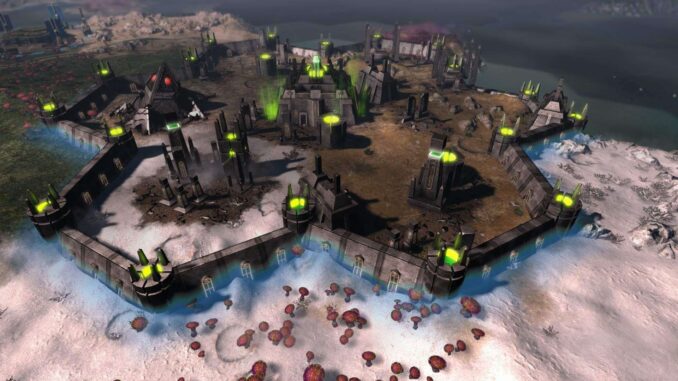
This guide is intended to help new or very casual players learn the mechanics behind Gladius. It won’t tell you specifically what to build or do, but it will tell you how the rules work that govern the game!
Guide for Newbies
Introduction
This guide will contain information that I hope will be helpful to new players, as well as casual players that have never taken the time to dive deeply into the core mechanics behind Gladius. This guide is made with a focus on Solo and Cooperative play.
What is Gladius?
This section is aimed at people who aren’t familiar with the game at all. You can probably skip this if you’ve played a game or two of Gladius and just want some general tips for the game.
Gladius is a turn based 4X game in the style of Civilization. You can kind of think of the game like a digitized board game, with units acting as your pieces and the hex grid acting as tiles. Every time you play a new game of Gladius, you’ll be playing on a randomly generated map. Your objective is to build up your faction’s strength by capturing outposts and relics, building cities, and ultimately producing units to destroy your opponent’s cities. When a player has no more cities left, they are eliminated from the game.
Most players consider Gladius to more accurately fit the moniker of “3X” rather than 4. 4X denotes a game in which players Explore, Expand, Exploit, and Exterminate enemies. There is no diplomacy or trade in Gladius, meaning you are really just Exploring, Expanding, and Exterminating. What makes Gladius so special is that it occupies the rich Warhammer 40,000 setting: “In the grim darkness of the 41st Millenium, there is only war”.
Game Setup
Basic Options
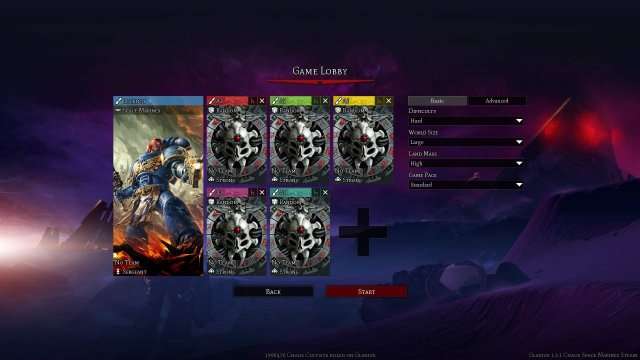
The first thing that you’ll see on the Game Lobby screen is the player slots and the basic options. You choose both your own and AI factions here, as well as set permanent alliances in the form of teams. Colors for each player can also be customized by selected the paintbrush in the top left corner of each faction portrait. On the far right, there is a list of general options to customize your game experience.
Difficulty ranges from Very Easy to Impossible, and modifies the AI players’ loyalty, a concept that we’ll talk about later. For now, just know that on higher difficulties the AI will get bonuses that will allow them to produce, research and expand much faster. You may also modify the difficulty of individual players by selecting the banner at the bottom of their portrait below the Team banner. Note that you can change your own difficulty modifier, thus either handicapping yourself or giving yourself an advantage.
World Size determines the size of the map. Map size also comes with a recommended amount of players, but you can add or remove them to your liking. Be aware that map size can affect balance to an extent, with a larger map meaning on average larger armies, later technology, and more turns to win the game.
Land Mass determines the ratio of land to water for the map generator. On higher settings, expect the world to be more of a large chunk of terrain than the often snaky peninsulas and passes that are generated on lower settings. Essentially, lower settings will give more chokepoints and defensive positions but also allow more room to flank with aircraft.
Game Pace governs the amount of time it will take to produce units and buildings as well as progress along the tech tree.
Advanced Options
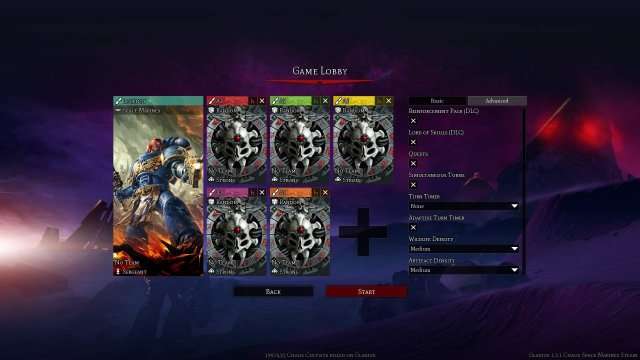
In the advanced options, you’ll be able to more finely tune the parameters that will govern the generation of your map. The options at the top allow you to select what DLC you wish to play with, as well as choose whether or not to play with the story quests that are unique to each faction. Simultaneous turns will determine whether or not players will be able to take their turns at the same time, and will generally result in a faster experience. In a single-player game you will take your turn alone, while enemy factions will take their turn in a single go.
Turn Timers give players a set amount of time to complete each turn. Adaptive Turn Timers increases the duration of the turn timer generally the longer the game goes, giving more time in the late game than the early game.
Wildlife Density is a very important setting because it can have a large effect on how your game plays out. Generally, the higher the wildlife density, the more difficult it is to expand early. Gladius Prime will become much more dangerous at higher densities, so this can be a fun way to make your early game more interesting.
Beyond this, there are options for customizing the frequency of just about every biome and terrain feature. You can play with these options if you wish, but I recommend leaving them as default. At the bottom of the Advanced Options, you’ll find the world seed. This seed will allow you to replicate the world you generate for your game if you wish to play on it again.
The Map
Like many other 4X games, Gladius is divided into a hex-based tile system. Each tile has its own biome, along with other special terrain features. Units can only occupy one tile at a time.
Anatomy of a Tile
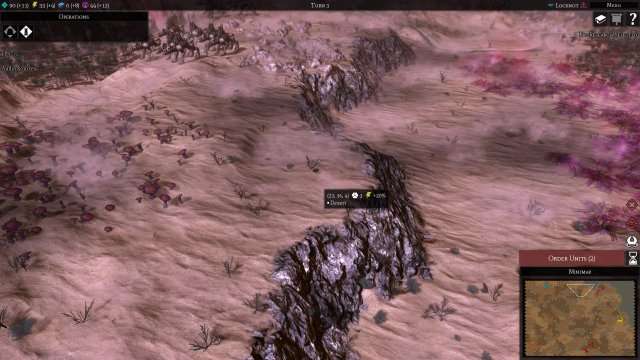
Every terrain tile has a set of coordinates that denote its position on the XY grid, as well as it’s height. The coordinates are as follows (x, y, z). The z coordinate shows the height of the tile. A tile connected to another tile of at least 2 height less will have an impassible cliff that prevents movement between them by land units. Terrain height also plays a large part in unit vision, as cliffs reduce line of sight for units beneath them. See the examples below.
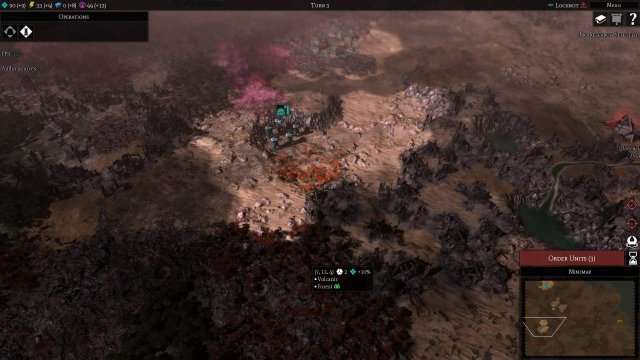
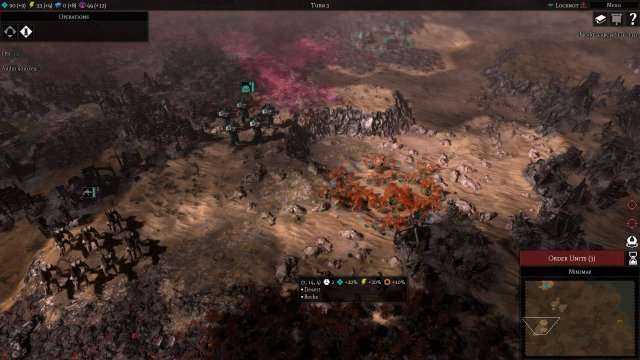
As you can see, the unit has more tiles in its vision when it is on top of the cliff. Understanding how height interacts with vision will be very important in your time on Gladius.
Biomes
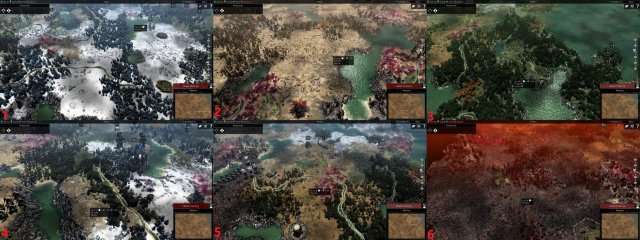
There are 6 Biome types in Gladius:
- Arctic.
- Desert.
- Grassland.
- Tundra.
- Savanna.
- Volcanic.
Each type lends itself to different resource usage. It’s important to note here, however, that these standard resource modifiers may seem different depending on what faction you’re playing. For example, Tyranids don’t use food, ore, or power resources, but rather use a unique biomass resource. Use this to get a general idea for how each biome is different.
- Arctic terrain generally has a penalty to food production and a bonus to research output for buildings built on it.
- Desert terrain generally has a penalty to food production and a bonus to energy production for buildings built on it.
- Grassland terrain generally has no penalty but has a bonus to food production for buildings built on it.
- Tundra terrain generally has no penalty but has a bonus to research production for buildings built on it.
- Savanna terrain generally has no penalty but has a bonus to energy production for buildings built on it.
- Volcanic terrain generally has a penalty to food production and has a bonus to ore production for buildings built on it.
Terrain Features
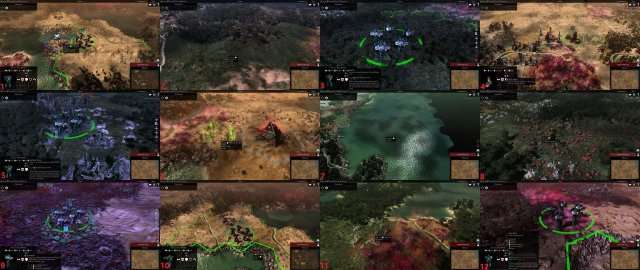
There are many terrain features that exist on top of the underlying biome of a tile. These features are very important for things ranging from movement and combat to city-building. Here, we’ll define 12 terrain features that will be important in your time on Gladius.
- Artefacts are scattered around Gladius, and will give a buff to your faction or all units under your control. Artefact buffs stack on top of each other, so controlling artefacts is very important. It takes one action for one of your units to seize control of an artefact, but units won’t be able to capture them if there are units of the currently controlling faction next to the artefact. Artefacts can increase the maximum hit points of all your units, give movement buffs, give loyalty buffs, increase sight radius, increase regeneration speed, or increase damage. It is also important to note that units may not occupy the same tile as an artefact!
- Brush adds to the food yield for buildings built on that tile.
- Forest tiles grant additional ore for buildings built in them, provide 33% ranged damage reduction to units inside, block line of sight, cost one additional movement point to enter, and restrict the amount of building slots to a maximum of 2. Forests can be removed by certain units or cities.
- This outpost has a Space Marine fortress of redemption next to it, allowing their city to get the city bonus from the outpost. See the Special Features definition below.
- Imperial Ruins grant additional ore for buildings built in them, provide 33% ranged damage reduction to units inside, block line of sight, cost one additional movement point to enter, and restrict the amount of building slots to a maximum of 2. Ruins can be removed by certain units or cities.
- Necron Tombs allow Necron factions to found cities on top of them.
- Water tiles (Ocean and Coast) can’t be built on or occupied by land units. Aircraft and skimmer units can cross these tiles, however.
- Orkoid Fungus increases food output and healing rate for Ork factions.
- Outposts are created when units capture Special Features. They provide 17% ranged damage reduction and 17% city damage reduction for units inside, as well as 50% increased healing rate.
- River tiles cost an additional movement point to enter.
- Rocks limit a tile to a maximum of 2 building slots.
- Wire Weed consumes all movement points, limits a tile to 0 building slots, and deals damage to occupying units each turn. It can also be cleared by cities or certain units.
Special Features

There are 8 types Special Features on Gladius that can be captured by a unit. Once captured, an outpost will be present on the tile. All special features have 0 building slots, a city bonus (the percentage) and a raw resource value. When a special feature is captured, the outpost will produce the raw resource value for the occupying faction each turn. When a special feature is claimed by a city, it will grant the raw output value each turn as well as increase the city’s output of the resource by the percentage shown.
Special features also grant additional resource bonuses to adjacent tiles, making them very important when planning a city.
Units
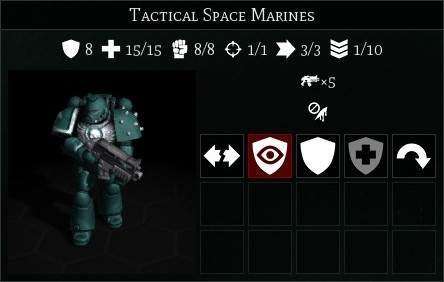
Each unit has a set of stats that define how it will function and interact with other units and the world. In order from left to right, the stats are:
Armor
Each point of armor reduces the amount of damage you can take from enemy attacks, up to 83% damage reduction (10 armor). However, armor over 10 armor is still useful when calculating armor penetration.
Hitpoints
This is the health of your unit. When it is reduced to 0, your unit dies permanently. Hitpoints will regenerate if a unit ends its turn with both its action and its movement remaining.
Morale
This stat tracks the mental state of your unit. When morale is low, your units will deal less damage and take more damage. Units lose morale when your allies die or suffer other unfortunate circumstances.
Actions
This stat shows whether or not your unit is still able to act this turn. Units act by doing things like capturing artefacts or attacking enemies.
Movement Points
These points track how many hexes your units can move this turn. Some tiles cost more movement points to enter than others, based on terrain features. Units exert a zone of control in adjacent hexes, meaning enemy units can’t move directly past them while they are alive. Flying units ignore zone of control and terrain blockers.
Experience
Shows your units veterancy. When your units gain levels by being near enemy units when they die, they gain both health and damage. Level 10 is the maximum level.
Units also have one or more weapons, listed below the statistics. The weapons possess their own damage, number of attacks, and special traits. Hover over a weapon to see its specific statistics.
Below weapons are a unit’s traits and buffs / debuffs. Here is where you’ll see things like whether or not your unit is in cover. Default traits are typically white, Temporary Beneficial traits are typically in green, researched traits are typically in blue, and negative debuffs are typically in red.
Finally, a unit’s abilities are shown in the square grid at the bottom of the unit card. Here you can toggle overwatch, disband your unit, skip your units turn, or order your unit to standby until it is fully healed. Some units (heroes, for example) will have multiple unique abilities to use on this panel.
Wildlife and Other Neutral Units
Neutral Units are a large part of the early and mid-game in Gladius. Neutral units can be quite powerful and must be respected. Below is a current list of neutral units that you may encounter on Gladius Prime.
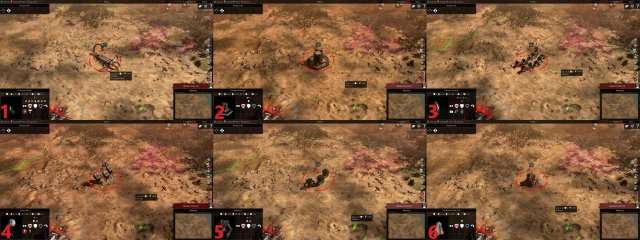
- Catachan Devils have a lot of movement and possess the infiltrate trait, meaning they will never be hit by your overwatch fire. They defend their lairs (see below) viciously. If you see one Devil, another is likely close behind the veil of fog. Be sure to bring armor piercing weaponry when trying to clear out a nest of Catachan Devils, as they possess an armor value of 8.
- Imperial Bastions will ruin the day of any early infantry unfortunate enough to find themselves in range. It is often wise to skirt around Bastions early until you have the necessary firepower to deal with them.
- Chaos Cultists possess a lot of models, but are very weak at range. They have a powerful melee if they can hit your units from full health, but after taking some damage they become much less threatening.
- Enslavers are one of the most dangerous neutral units on Gladius Prime. Sporting a large health pool and a respectable melee attack, their true power lies in their ability. They can enslave player units below morale 8.5, taking full control of them until the offending Enslaver is killed. Enslavers spawn and stay near Artefacts, so use this knowledge to your advantage when exploring the map. If you can burst down or surround Enslavers within one turn, then you can feel comfortable engaging them. Otherwise, be wary.
- Ambulls are a beefy neutral unit with three models. They have a respectable amount of armor and can deal reasonable damage. They regenerate HP per turn thanks to their trait. Don’t be too worried about them unless they are in a group.
- Catachan Devil Lairs periodically spawn Catachan devils. This makes them and Psychneuein the only neutral units capable of reproducing during the game. Devils will protect this nest with their lives, but destroying it can be valuable in preventing a huge swarm of Catachan Devils from amassing.
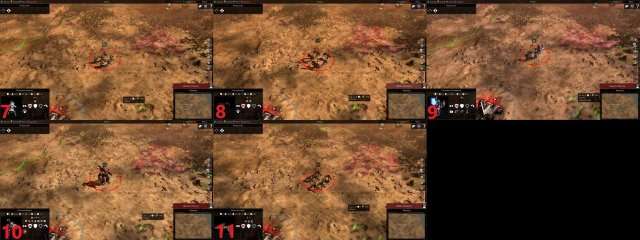
- Neophyte Hybrids are more dangerous than they look. They will periodically activate their ability, gaining ranged damage reduction for a turn and making them surprisingly difficult to eliminate. They also have better range than most neutral units, giving them the ability to engage you from afar.
- Psychneuein will also activate a ranged damage reduction ability periodically; be careful engaging when this ability is active, as it will make them surprisingly resistant to your ranged fire. Additionally, they can’t be engaged in melee by ground units as they are flyers. Psychneuein will also infest units that they attack, causing the infected unit to spawn a fresh unit of Psychneuein on death while they are debuffed.
- Techpriest Enginseers are usually accompanied by several Kastelan Robots (see below). While not dangerous on their own, they can buff and heal other neutral robots. Consider striking them quickly when they are out of position or isolated.
- Kastelan Robots are probably the neutral units that give new players the most trouble. They are tanky, have a trait that reflects some damage onto enemy ranged attackers, and have a large attack range. They also tend to be found in clusters, resulting in an overall extremely dangerous neutral until you have researched your faction’s first anti-armor units. Try not to aggro robots early, as they have been known to attack your expansion cities if they come across them. Thankfully, Robots tend to spawn further in the space between player spawns. You should be able to avoid them until you have the tech to deal with them.
- Kroot Hounds are very common. Like Catachan Devils, they possess the infiltrate trait, allowing them to ignore your overwatch fire. They can do a large amount of damage to unsuspecting and unarmored infantry, but will crumble under any kind of damage. They can move quickly and ignore cover, so be careful that your early explorers don’t find themselves surrounded.
Cities
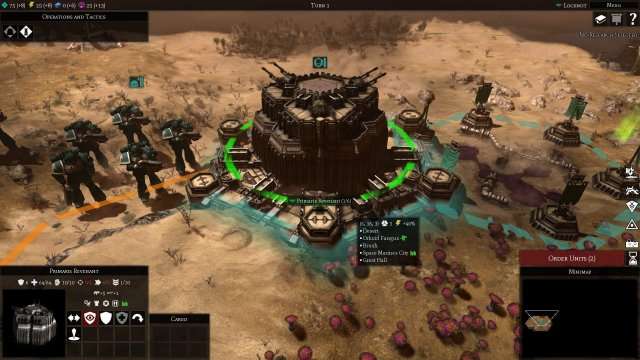
Cities are the production centers and the heart of your territory. If a player loses all of their cities, then they will lose the game. The headquarters is visible in the bottom left like any other unit, and possesses its own weapons and traits. Cities usually have high HP and armor, allowing them to be fairly safe from most neutral units and scout armies. Cities also serve as transports, allowing your infantry to take shelter inside them and recover while away from enemies.
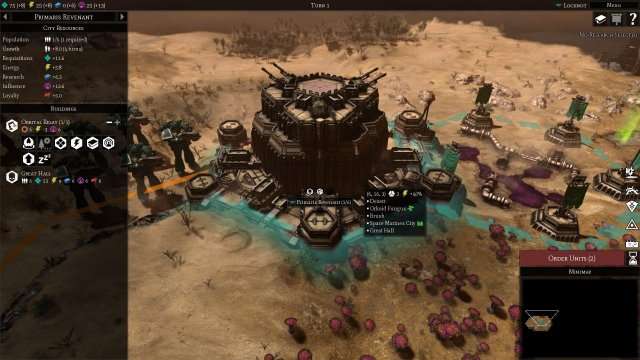
Cities show their population, population growth, and net gains or loss of each resource on the left panel. Below that are the buildings, which can be individually turned on and off to conserve resources that may be in a shortage. Each building type produces units independently of other types, meaning that you can make infantry units at the same time as producing another building. Duplicate buildings increase the speed at which units will be built, or the amounts of resources produced each turn. Each building except the HQ requires a population to operate at maximum efficiency, so keep an eye on your population to ensure that you have an equal number of citizens and buildings. Cities acquire tiles, giving units that are stationed inside them additional damage reduction and healing bonuses. Technologies can expand city tile acquisition range.
Loyalty is also important, as positive loyalty will give bonuses to city production of units and resources while negative loyalty will penalize it. Loyalty decreases for each additional city you found as well as each population growth. Loyalty is also stored locally in each city, so one city may have more than another depending on population size and buildings present. Higher difficulties give AI loyalty bonuses, increasing their overall resource output and production speed.
Tips and Tricks
You can see changes like players founding new cities or capturing outposts in areas of fog that you have previously revealed but don’t currently have vision of. This usually allows you to get some early warning if enemies are advancing from that direction.
If you can see the edge of a player-owned outpost tile while exploring but don’t know what faction that player is, look closely for the banners, decorations, and colors around its visible border. Each faction has a unique decoration feature for outposts, allowing you to tell what faction you are about to encounter.
Wildlife will often leave you alone early as long as you don’t attack them. Turning off overwatch for the first few turns can keep you out of conflict with neutrals if you are particularly worried about them, but an attack will end up drawing aggro. If enemy AI attack wildlife, it seems that it can sometimes trigger the neutrals to attack you even if you haven’t attacked them (unconfirmed).
Pay close attention to the traits of your units and their weapons. These can have massive implications for the most efficient usage of certain units. For example, Devastator Marines deal more damage if they don’t move before they attack because of their weapons’ Heavy trait. This can lead to a much higher damage output if you find a safe location for them and leave them there.
If you have find yourself having difficulty spotting sneaky cliffs that obstruct your units movement, consider toggling on the “Show Cliff Highlights” setting in the video options. This will put a yellow highlight on cliff borders that makes them much more visible.
If you find yourself having a lot of trouble with wildlife, consider advancing more slowly. Starter units will often fare poorly if they become surrounded or outnumbered by neutral units, and there will be a lot of them at the beginning of the game.
Final Thoughts
This guide contains most of the information that you’ll need to understand the systems that pull the strings behind Gladius Prime. Please comment if you notice incorrect information, have suggestions for sections that would be useful to add, or find anything confusing. I really enjoy Gladius: Relics of War and hope that this guide enhances your experience with the game.


This is probably the best Gladius primer on the net. Thanks so much for putting this together!
Excellent. This is exactly what I needed. Thanks